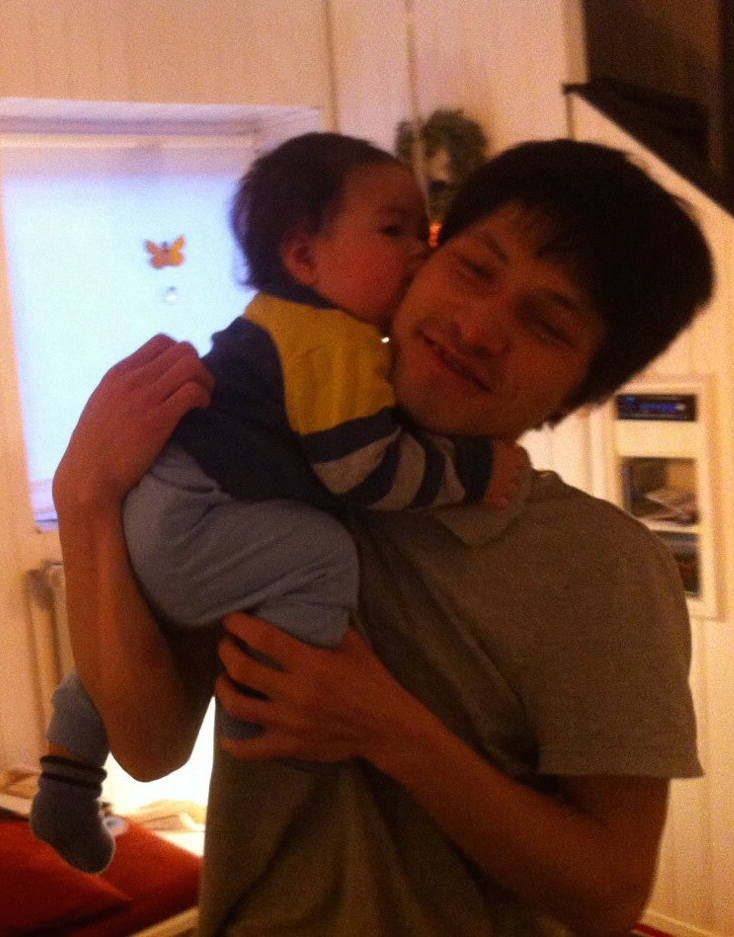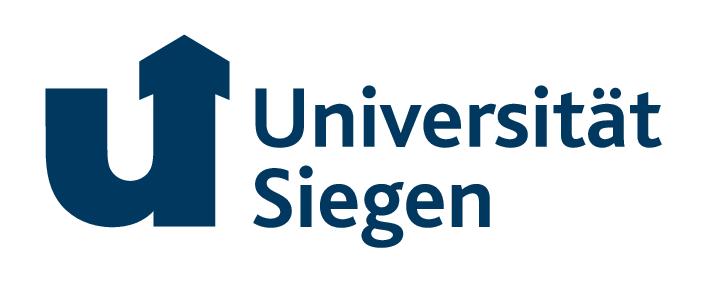
Postdoctoral researcher
Room: B110-ENC
Email: chau.nguyen@uni-siegen.de
Research interest
I am fascinated by the question: What constitutes the fundamental nature of quantum phenomena? Attracted by the potential applications of quantum technology, I have recently been investigating protocols for scalable and robust quantum information processing with near-term quantum devices: Can one distill the quantumness out of these noisy devices? More broadly, I have also explored various phenomena in quantum physics, ranging from tunnelling effects, geometrical phases, to quantum entanglement, quantum nonlocality, and quantum incompatibility.
I also carried out research in several different topics in statistical physics, inference theory and condensed matter physics. My Ph.D. was on the statistical physics of inference problems with applications in cancer research, supervised by Prof. Johannes Berg at the Institute for Theoretical Physics, University of Cologne (Cologne, Germany). I also enjoyed studying the quasi-relativistic physics of graphene with Prof. V. Lien Nguyen at Hanoi Institute of Physics (Hanoi, Vietnam), and then with Prof. Markus Müller at the International Center for Theoretical Physics (Trieste, Italy).
Some news
- Antonio Gianfrate, Helgi Sigurðsson, Vincenzo Ardizzone, Hai Chau Nguyen, Fabrizio Riminucci, Maria Efthymiou-Tsironi, Kirk W Baldwin, Loren N Pfeiffer, Dimitrios Trypogeorgos, Milena De Giorgi, Dario Ballarini, Hai Son Nguyen, Daniele Sanvitto, Reconfigurable quantum fluid molecules of bound states in the continuum, Nature Physics (2024), highlighted in Nature Research Briefing
- This was a lot of fun collaboration with experimental colleagues. One day, Son told me about his recent work with Daniele on the realization of non-equilibrium condensation of polaritons at the bound state in the continuum (BIC). I was deeply impressed by their video, which recorded the BEC dynamics; it was the first time I saw BEC forming before my eyes. But Son added: “But it was not clear why there are two bright dots for a single condensate.” I was also puzzled. We discussed enjoyably for several months thereafter and finally managed to formulate a theoretical explanation for the far-field pattern of BIC polariton condensate. It turns out that this is deeply rooted in the Dirac-like nature of the BIC polaritons, which allows them to form bound states in positive potential and emit light in a rather peculiar way. I still remember the very cool feeling when we saw our calculated values aligning just perfectly with the experimental data measured without fitting!
- Hai-Chau Nguyen, Shadow tomography with noisy readouts, arXiv:2310.17328 (2023)
- When thinking about errors in quantum computers, shadow tomography suffers detrimentally from readout errors. I tried for a week to make use of the state of the art of readout-error-mitigation by means of X-twirling. But the whole business appears to be not at all clearly applicable to shadow tomography. I nearly quit and left for the weekend with my kid in Frankfurt to visit the Senckenberg museum. He slept on the train to Frankfurt, and I had nothing to do but think about the whole failed week. It just suddenly came to me that classical shadows can be defined in a much more general way so that they become more conformable with readout noise, and when twirled by X, allow for efficient mitigation in Fourier space. When I was writing all these down, my kid woke up. He looked at the page and commented that he apparently knows some symbols (“+”, “-“), and started asking why I wrote such a big pi. I said, it denotes the product of many numbers.
- Hamza Jnane, Jonathan Steinberg, Zhenyu Cai, H Chau Nguyen, Bálint Koczor, Quantum error mitigated classical shadows, arXiv:2305.04956 (2023)
- Spring 2023, Jonathan struck up a conversation with Bálin at a conference in Bad Honnef, and a pressing question arose: one has to combine classical shadows with quantum error mitigation for early fault-tolerant quantum computation. Appending the two procedures appears somehow natural. But we actually had to sit together for several weeks to go through the detailed analysis of the resulting complexity. Fortunately, we managed well.
- Hai-Chau Nguyen, Information-theoretic approach to readout-error mitigation for quantum computers, Phys. Rev. A 108 025419 (2023)
- Back then, I was teaching Machine Learning and just explained the Expectation-Maximization algorithm to students. While all the logical steps were fine, I was never satisfied with how it was motivated in textbooks. Accidentally, I learned how the algorithm can be used to derive the so-called Iterative Bayesian Unfolding Rule, originally used in experiments in particle physics, now also used to mitigate readout errors for quantum computers. Putting in such a concrete application, it becomes clear to me how one can motivate all the procedures from an information-theoretic viewpoint.
- Helgi Sigurðsson, Hai Chau Nguyen, Hai Son Nguyen, Dirac exciton-polariton condensates in photonic crystal gratings, arXiv:2310.08423 (2023)
- This was a theoretical follow-up of the Nature Physics (2024) paper mentioned above. Funny enough, I had used the techniques of (seemingly unrelated) open quantum systems to derive the far-field emission of the classical optical wave system. Just a vivid proof that everything is connected together.
- Yi Li, Yu Xiang, Xiao-Dong Yu, H Chau Nguyen, Otfried Gühne, Qiongyi He, Randomness Certification from Multipartite Quantum Steering for Arbitrary Dimensional Systems, arXiv:2307.02061 (2023)
- Yi visited us in spring 2023 and brought a curious numerical observation: quantum steering and certifiable randomness are equivalent for two measurement settings. We sat together in the coffee room to sketch the intuition for a possible proof. The next morning, Yi wrote up the proof mathematically, which scared me at first. But when I calmed down, we verified again that it did describe the intuition correctly.
- Jonathan Steinberg, H Chau Nguyen, Matthias Kleinmann, Certifying activation of quantum correlations with finite data, arXiv:2305.03748 (2023)
- Matthias is never happy if something is not rigorous. This is particularly true for statements on a quantum state: What is the confidence region of the statement? And this directly affects experiments such as the superactivation of quantum correlations. We derive a confidence polytope, which is simple enough to allow for the verification of the correlation of all its vertices, rigorously proving the correlation property of the entire confidence region.
- Ties-A Ohst, Xiao-Dong Yu, Otfried Gühne, H Chau Nguyen, Certifying quantum separability with adaptive polytopes, arXiv:2210.10054 (2023)
- We have developed the polytope approximation as a solution to the quantum steerability of arbitrary two-qubit states. How about separability (or entanglement)? It took us quite some time to realise that the proposed polytope approximation can actually be adapted and improved to address the ‘notoriously difficult’ problem of certifying quantum separability (words used by Girardin et al). In fact, the method works so well that I’d say, personally, the problem of certifying quantum separability is solved for systems of intermediate dimensions.
More publications to be found here.
Translations
- Carlo Rovelli, The order of time (Penguin Books) into Trật tự thời gian (Vietnamese), published at Omegaplus.
Teaching
- WS 2023: Masterpraktikum “Experiencing Quantum Computers”
- SS 2023: Aspect of Machine Learning
- WS 2022: Masterpraktikum “Experiencing Quantum Computers”
- SS 2022: Condensed Matter Theory
- WS 2021: Masterpraktikum “Experiencing Quantum Computers”
- SS 2021: Übungen Statistischer Physik
- WS 2020: Introduction to Theoretical Condensed Matter Physics
- WS 2019: Exercises for Quantum Theory of Light
- SS 2019: Quantum Entropy and its Applications
- WS 2018: Exercises for Theory of Quantum Matter
- SS 2018: Exercises for Quantum Information Theory
- WS 2014: Exercises for Statistische Physik
- WS 2013: Exercises for Advanced Statistical Physics
- WS 2012: Exercises for Statistical Physics and Information Theory
Theses
Comments on books
I truely love textbooks as well as popular physics books and intend to maintain a collection of reviews of textbooks. This is a tentative personal list (under construction).


